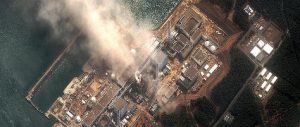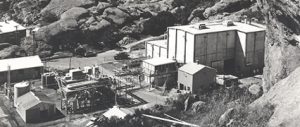The Zhang family tragedy was the only case of radiation poisoning that Lou Bincheng dealt with in his long career as a doctor. But radiation safety specialist Wang Zuoyuan knows that, in China, incidents involving radiation exposure are not infrequent.
There are innumerable radiation sources all over China, used in healthcare, agriculture and industry. If you added up all the deaths and injuries resulting from failures in the management of these sources, they may well exceed the impacts of the Category 5 radiation leak at Japan’s Fukushima nuclear-power plant.
Figures made public by China’s health and public security ministries show that, between 1988 and 1998, there were 332 recorded radiation incidents in China and 966 people were exposed to radiation. 80% of these incidents involved the loss of radiation sources – 584 were lost, 256 of which were never found.
For example, the Institute of Vertebrate Paleontology and Paleoanthropology at the Chinese Academy of Sciences purchased a cesium-137 source in 1972; in 1988, it was found to be missing. On June 25, 1990, a breach of procedure in handling cobalt-60 at the radiology lab at Shanghai’s Second Military Medical University killed two workers and left five with radiation sickness.
Wang Zuoyuan points out that, in the 1990s, China had almost the same number of radiation incidents as the United States, but when the number of radiation sources in each country is factored in, the rate of accidents in China is actually 40 times higher.
In 1998, regulation of radiation sources was tightened as it was passed from the Ministry of Health to the environmental authorities. But accidents still happen. On April 26, 1999, the lead container of a cobalt-60 radiation source was sold as scrap metal in Henan, resulting in the irradiation of a number of people. On October 21, 2004, equipment being used to manufacture cobalt-60 sources at a factory in Jining, Shandong, failed. Two workers entered the workshop without checking radiation levels, and died of multiple organ failure five and 10 weeks later.
On April 11, 2008, five workers at Shanxi Hengze Radiation Technology, wearing defective dosimeters – devices for measuring radiation levels – entered a workshop where a source of radiation had not yet been placed in a safe position. One died, the other four suffered radiation sickness.
Even today, some areas of China see numerous failings in management of radiation sources. After the accident at Fukushima, Qinghai’s environmental authorities checked up on radiation sources at companies including a subsidiary of China National Petroleum Corporation in Haixizhou. There were some common safety issues, such as untrained workers and a lack of health monitoring.
The aftermath
In 2009, Zhang Fang received her last compensation payment for her husband Zhang Youchang, who had already been dead for 17 years: 60,000 yuan (US$9,200). She doesn’t think the money will make any difference to her life.
Zhang Fang remarried and became pregnant twice, but neither pregnancy was carried to term. “I’m scared that if I did have another child, there would be problems,” she says. Tests indicated that a miscarriage she suffered in 2000 was related to her earlier exposure to radiation.
Eighteen years ago, when she was carrying her daughter Jingsheng, Zhang Fang was unsure whether she should go ahead with the pregnancy. For a while, the foetus stopped growing and its head circumference was smaller than normal. The doctor tried to persuade Zhang to have an abortion on the grounds that exposure to radiation could have consequences for the child. But she couldn’t bring herself to do it, and she wanted her husband to have left behind a child.
Jingsheng weighed just two kilograms when she was born. She had little hair and problems feeding. Zhang Fang struggled to raise a weak and sickly child singlehandedly.
When Jingsheng was eight-months old, there was still no sign of compensation from the Xinzhou Science Committee, the environmental station where the source had been found or the China Institute for Radiation Protection. With the one-year limit on bringing a court case about to expire and no money for a lawyer, Zhang Fang’s father Zhang Chouyin personally sued all three.
In 1997, a verdict was finally reached and the three defendants were ordered to pay out a total of 780,000 yuan (US$119,000), of which 320,000 yuan (US$49,000) was to go to Zhang Fang and her daughter as compensation. The following year, the defendants appealed, and the amount that each had to pay was clarified, but the total figures did not change.
In the following three years, Zhang Fang was often too ill to work. She had no income at all, but still the compensation did not appear.
So Zhang Chouyin took his daughter and baby granddaughter to each organisation’s offices to demand payment. They were even detained for two nights after blocking an entrance. Eventually they managed to obtain a letter from the provincial authorities requiring that payment be made but, locally, it made little difference.
In 2002, 10 years after the actual accident, the Xinzhou Science Committee finally relented, agreeing to “first pay 80% of the compensation”. In the following years, Zhang Fang received a number of payments – but she still had to give out kickbacks. “There are a lot of things we just don’t want to think about. In the end we got something over 200,000 yuan,” (US$30,500) she says.
She was more worried about her daughter’s cognitive development. Jingsheng started elementary school when she was eight and it became clear she was different from other children. Her homework wasn’t good enough, particularly in maths. No matter how hard she tried, she couldn’t manage to add or subtract double-digit numbers. She made it to the end of junior middle school, even though most of the time she didn’t understand the lessons.
In May 2010, the National Institute for Radiation Protection and Peking University 3rd Hospital published a paper which calculated that, while in the womb, Jingsheng received a radiation dose of 1.85 grays, which did not affect her physical development but had a major impact on her cognitive development. On the Wechsler Intelligence Scale for Children, she obtained an IQ score of only 46 – lower than 99.9% of the population.
Now Jingsheng is as tall as her mother. She was once invited to work in a beauty salon a trainee, but it didn’t work out. “She looks good, the other staff and customers all like her,” says her mother. “But she can’t sell anything – she’s no good with numbers.”
Zhang Chouyin has worked out that the compensation decided years ago now looks too low. “In 1992, it cost 19 yuan for a hard seat ticket to Beijing. Now it’s 72 yuan. How many times has it gone up?” He was also affected by the radiation and his health is getting worse – he has lost teeth and suffers back pain.
Jingsheng is from a rural area, is not entitled to welfare payments and doesn’t have a job. Looking at the hospital letter confirming her IQ, her mother worries out loud. If she registers Jingsheng as disabled, the welfare authorities might find her work. “But she’s a girl and will need to get married soon. If she has a label like that, who’s going to want her then?”
This article originally appeared in Century Weekly, where Cui Zheng is a trainee reporter.
Part one: the Zhang family tragedy
Homepage image from caing.com shows Zhang Fang (right) with her daughter Zhang Jingsheng.


